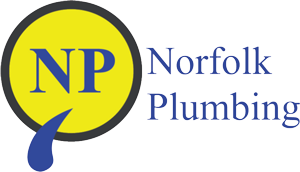We’ve all been there before… the moment you or your guest flushes a toilet only to not hear the sound of a normal flush. The toilet starts running longer than normal, and the bowl quickly fills up. Clogs happen! However, this should not be a daily occurrence. For those of you without a plunger handy, this can be a frustrating situation. If you don’t have the right tools lying around, you can follow our various tips to help ‘clear’ the situation!
Firstly, if your toilet is running or overflowing, take the top of the toilet tank off and push down the flapper. That way, you’ll stop the flow of water into your toilet bowl. This doesn’t turn the water off, it just helps avoid overflow. Next, don’t panic! Consider giving these methods a try.
- Vinegar & Baking Soda: Keeping in mind to use non-harmful materials such as vinegar and baking soda can help you if you’re in a pinch and without a plunger. These traditional and proven cleaning materials can work to clear your clogged toilet. Pour a cup of baking soda in your toilet bowl, and wait five minutes. You’ll want to do this next step slowly to keep liquids from splashing! Gently add two cups of vinegar. This will create some bubbles. Practice a tiny bit more patience, and let the mixture set for a few minutes. Now, give the toilet a flush. It may take more than one flush, so try a second flush. You’ll know the sweet sound of a working toilet when you hear it, and we hope this helps!
- Liquid Dish Soap & Hot Water: Add some liquid dish soap in your toilet bowl, and wait about 15 minutes. Then use the sink tap or tub faucet to gather about a half a gallon of hot water in a bowl or bucket. (Remember, you never want to put boiling water down any drain. Make sure it is hot but not boiling.) Gently add this hot water to the toilet bowl while being mindful of splashback. Let it sit for a few more minutes. Give flushing a try! The soap can help lubricate the clog, and the hot water can be that extra help to clear it.
- Toilet Brush: If you don’t have any of the above mentioned materials, it might be worth giving this last method a try. Use the toilet brush, bristles facing down, to act sort of like a plunger. You’ll pull it back and forth (without making a big mess) to try and break up the clog. This can help break up toilet paper into smaller pieces. Give flushing a try afterwards. The toilet brush may have to be retired and replaced with a new one after this. Or you can come back here for more information about how to clean your toilet brush coming soon… (Did you know that you should clean and sanitize your toilet brush monthly!?)
We do recommend getting a plunger for future clogs. It’ll keep unclogging methods simple and straightforward. When you do try using a plunger but it isn’t creating a seal in your toilet bowl, try running it under hot water in the tub. It can help soften the plunger to create a better seal. (Just make sure to wash your tub afterwards). It usually takes a clog for you to realize you don’t have a plunger, so be sure to add one to your shopping list!
When to Call Norfolk Plumbing Professionals:
- If you smell gas, you should open a window and call us straight away. It could be a more serious issue with your plumbing.
- If the clog just won’t budge, it could be a deeper issue. The clog could be further down in your pipes where your efforts aren’t effective, or it could be an indication of a more serious problem.
- If you used corrosive materials to try to unclog a toilet but it didn’t work, it’s time to give us a call. Having those chemicals sit in your pipes can be damaging.
- If clogged toilets have become more of a frequent occurrence in your bathroom even over the simplest of flushes, you’ll want to get it checked out sooner rather than later. Wondering why clogs keep occurring? Check out our recent blog about toilet clogs!
Keep your plumbing maintained and in good working order! Give the licensed professionals at Norfolk Plumbing a call for all your plumbing needs.
